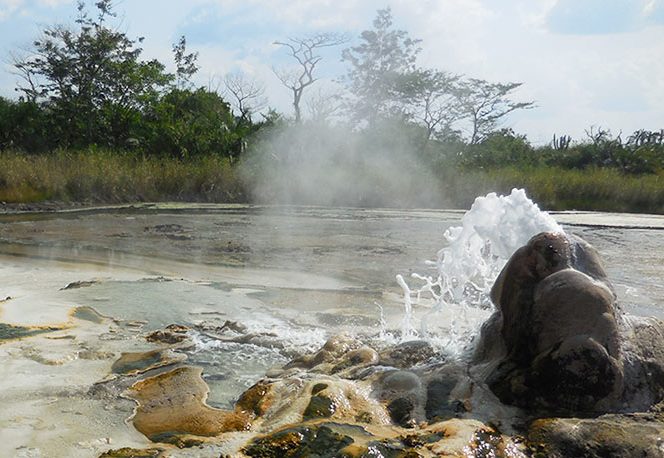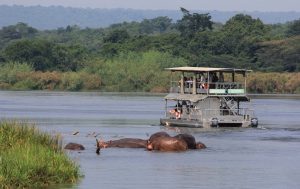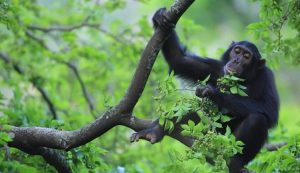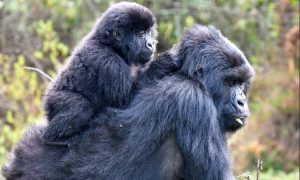Semuliki national park is found in the western in Bundibugyo district with an area cover of 219 square kilometers. The national park was started in 1932 and gazetted as a national park in 1993 and renamed from bwamba forest to semuliki national park. The national park is blessed with flora and fauna such as 440 bird species with 50 guinea-Congo biome species that are only found in the national park and no where else. The national park is a home to 53 mammals where 10 species of primates.
The national park is known for its ancient hot springs both the male hot spring known as bintente and the female hot spring called nyasimbi.
ATTRACTIONS IN SEMULIKI NATIONAL PARK
HOT SPRINGS
The national park is known for having 2 hot springs that are rounded by forest and palm trees as well as the veiled in cloud of steam. While at the hot spring tourists get to told about the formation of the hot springs besides the scientific explanation. The male hot spring is named bintente which is 12 meters in diameter whereas the female hot spring is named nyasimbi which is a geyser that sprinkle to 2 meters in the air from its opening in a salt sculpture. The waters have a temperature of over 100 degrees Celsius and the pools are hotter.
WILDLIFE
The national park is a habitat to 53 mammals which include bushpigs, buffalos, warthogs, waterbucks, elephants, leopards among others. Primates such as black and white colobus monkeys, olive baboons, red tailed monkey, blue monkey, vervet monkey as well as the chimpanzees and nocturnal primates such as pottos and galagoes among others. This makes the safari to the national park a memorable one.
BIRDS
Semuliki national park is among the birding safari destinations in uganda with over 440 bird species. Among the species there are 9 hornbill as well as 66% of the forest bird and among the 131 of 144 gunea-congo forest biome species plus 50 species that are only found in the forest and nowhere else in east Africa. Birds include black dwarf hornbill, white-crested hornbill, long-tailed hawk, African piculet, maxwell’s black weaver, blue-billed malimbe, yellow-throated nicator, yellow-throated cuckoo among others.
ACTIVITIES IN SEMULIKI NATIONAL PARK
GAME DRIVES
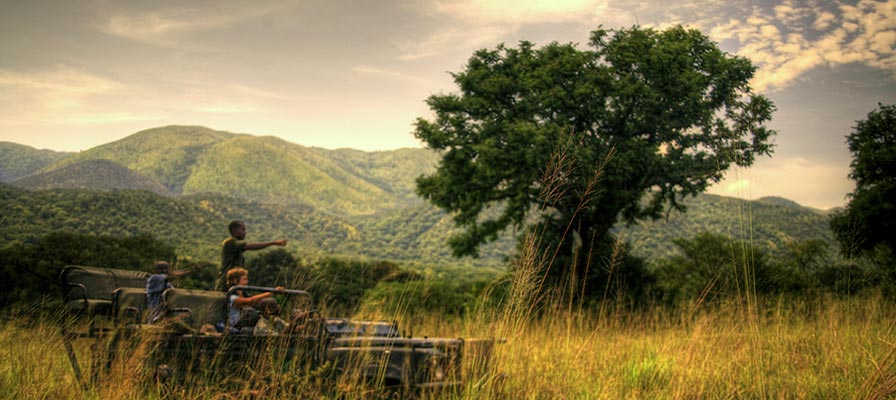
The game drives in semuliki national park are carried out in toro-semuliki wildlife reserve. These normally take 3 to 4 hours and are done in three phrases that is morning game drives that start at 6am and afternoon at 3pm as well as night game drives where tourists can spot the nocturnal species such as the white-tailed mongoose. The most rewarding game drive is the morning game drives where tourists spot animals in their active status.
SEMPAYA HOTSPRING VISIT
There are two hot springs both the male and female hot springs. The name sempaya comes from the Swahili word called sehemu mpaya which means difficult place. Scientifically the hot springs were formed by the volcanic activities as a result of interaction of ground water and magma which leads to the formation of the hot springs.
But the locals of bamaga clan as well have their story about the formation of sempaya hot springs. These believe that as the women had gone to fetch firewood from the forest, they saw a hairy man dressed in bark cloth having a spear with a dog. The women got scared and ran back home to tell their husbands. Later their husbands went and picked the man and took him to their home, they got him a wife on the same village.
As he continued hunting one day he never returned back from the forest and after 3 days the men went to look for him and they only found the spear but the man and dog were nowhere to be seen. When the men told the wife, the wife ran into the forest and never returned as well. When the men searched the forest, they only saw her clothes on the place where the female hot spring is located currently. And thus the formation of the female hot spring called Nyansimbi and the male hot spring called Biteete.
GUIDED NATURE WALKS
The semuliki national park has 3 main trails for the nature walks and these include kirumia trail, red monkey trail and the sempaya trail.
The kirumia trail; the walk is conducted at 8am and the trail is 13km through the forest up to semuliki river. The walk takes 8hours and is best for bird watching as well as some primates can be spotted. Bird species include African piculet, black-faced rufous warbler, lemon-bellied crombec, long-tailed hawk among others.
Red monkey trail; this is a 11km trail and is found on the eastern border of the national park. The trail gives an opportunity to tourist to spot primates such as chimpanzees, red-tailed monkeys and other animals such as buffalos and elephants among others. The trail has many bird species than the sempaya trail.
Sempaya trail; the walk takes 2 to 4 hours and can be done in the morning or afternoon basing on the scheduled time. The trail is 8kilometers.
BOAT CRUISE
The boat cruise within semuliki is carried out on semuliki river up to lake albert. While on a boat cruise Uganda safari tourists have an opportunity to spot animals such as Nile crocodiles, sitatungas, hippopotamuses, bush backs among others. Tourists can as well enjoy the amazing views of the Rwenzori kijura escarpments as well as birds especially the shoebill in the swampy areas
BIRD WATCHING
Birding is among the top activities within semuliki national park. The national park is an amazing birding safari destination as it’s a home to over 44o bird species. Birding is carried out on foot with well-established forest trails. Birds include blue-billed malimbe, yellow-throated cuckoo, red-throated Aletha, red-chested owlet, spot-breasted ibis, maxwell’s black weaver, Congo serpent, white crested hornbill, equatorial akalat, western green tinkerbird among others.
BATWA CULTURAL ENCOUNTERS
After the wildlife safari in semuliki national park, tourists can as well get to visit the Batwa pygmies and learn things such as how they used to hunt and gather fruits. The Batwa are found at ntandi on the Bundibugyo Road after the sempaya hot springs.
Initially the Batwa were fruit gatherers, hunters, leaves eaters but their whole life depended on the forest. But the park was gazetted in 1933 they were refused from accessing the area. The Batwa people have performances about their culture and customs through music dance and drama.

